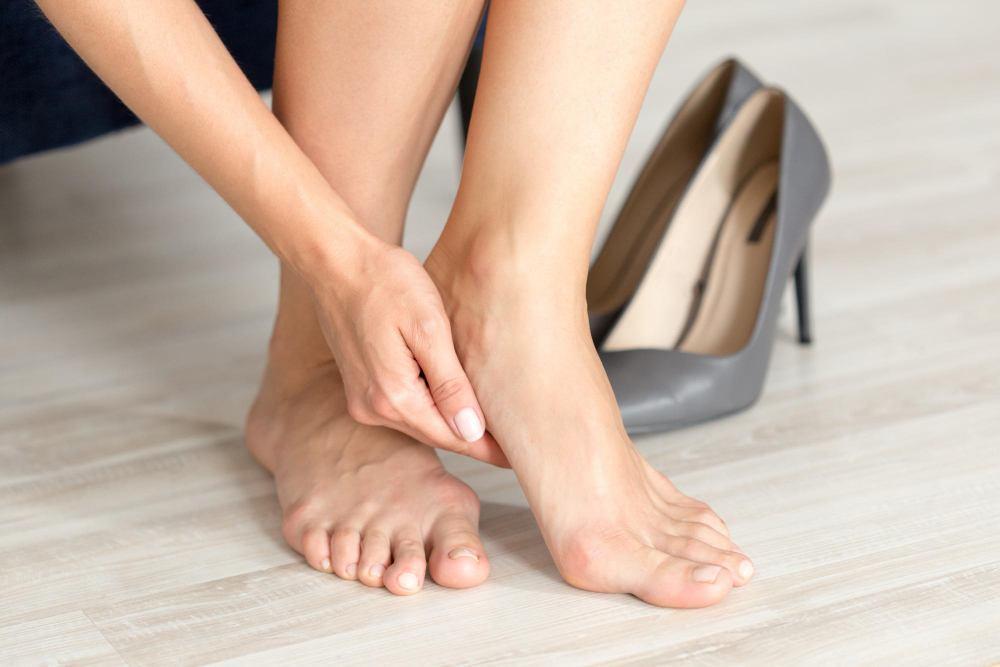Causes of Swelling in Feet and Ankles
 Our feet and ankles bear the weight of our every step, but they can only carry so much. When pushed too far, they can swell and present other symptoms that warrant attention. In this brief article brought to you by Mountain Spring Podiatry, we look at some common causes of swelling in feet and ankles. We’ll also share some preventative measures you can take to avoid the discomfort and risk in the first place. If you’d rather see a licensed podiatrist, or foot doctor, then call Mountain Spring Podiatry to schedule an appointment.
Our feet and ankles bear the weight of our every step, but they can only carry so much. When pushed too far, they can swell and present other symptoms that warrant attention. In this brief article brought to you by Mountain Spring Podiatry, we look at some common causes of swelling in feet and ankles. We’ll also share some preventative measures you can take to avoid the discomfort and risk in the first place. If you’d rather see a licensed podiatrist, or foot doctor, then call Mountain Spring Podiatry to schedule an appointment.
Understand the Root of the Problem
Some people rush to put ice on a swelling foot or ankle. While that’s sometimes the right thing to do, it’s important to understand the root of the problem and tackle the source. Here are some causes to consider:
- Fluid Retention: Also known as edema, this occurs when excess fluid accumulates in the tissues.
- Injury or Trauma: Injuries, such as sprains or fractures, can lead to localized swelling. Trauma to the foot or ankle disrupts the normal flow of fluids, resulting in inflammation and swelling as the body’s natural response to injury.
- Infections: Infections, whether bacterial or fungal, can trigger inflammation and swelling in the affected areas.
- Venous Insufficiency: Venous insufficiency refers to the inability of veins to adequately circulate blood back to the heart. This condition can lead to fluid accumulation in the lower extremities, causing swelling in the feet and ankles.
- Lymphatic Issues: Dysfunction in the lymphatic system, responsible for draining excess fluids from tissues, can result in swelling. Lymphedema is a condition where the lymphatic system fails to function properly, leading to persistent swelling.
- Medical Side Effects: Certain medications, such as those for high blood pressure or hormone therapies, may have side effects that include swelling in the feet and ankles. It is crucial to consult a healthcare professional if this occurs.
If you are concerned you may be dealing with one of these causes, then call Mountain Spring Podiatry to consult with a licensed podiatrist. Let’s get to the source of the symptoms.
Preventative Measures You Can Take
A healthy diet and regular exercise are pillars of a healthy life, and they apply here too. For instance, activities like walking, swimming, or cycling can enhance overall vascular health; and a diet low in sodium can help prevent fluid retention.
Elevating the legs and allowing them to rest is also a simple yet effective way to reduce swelling. This helps the excess fluid to drain away from the affected area. Compression stockings provide some extra assistant by applying gentle pressure on the legs which aids in blood circulation and preventing fluid accumulation.
Be Mindful of the Podiatrist’s Role
While these preventive measures are valuable, the are NOT a substitute for professional guidance from a licensed podiatrist. A qualified podiatrist possesses specialized knowledge in diagnosing and treating a myriad of foot and ankle conditions. Their expertise extends beyond alleviating symptoms; they address the root causes, providing comprehensive care tailored to each patient’s unique circumstances.
If you’d like to have a licensed podiatrist evaluate your foot and ankle swelling, then call Mountain Spring Podiatry to schedule an appointment, arrange a face-to-face meeting, or request a walk-in for as soon as possible.
